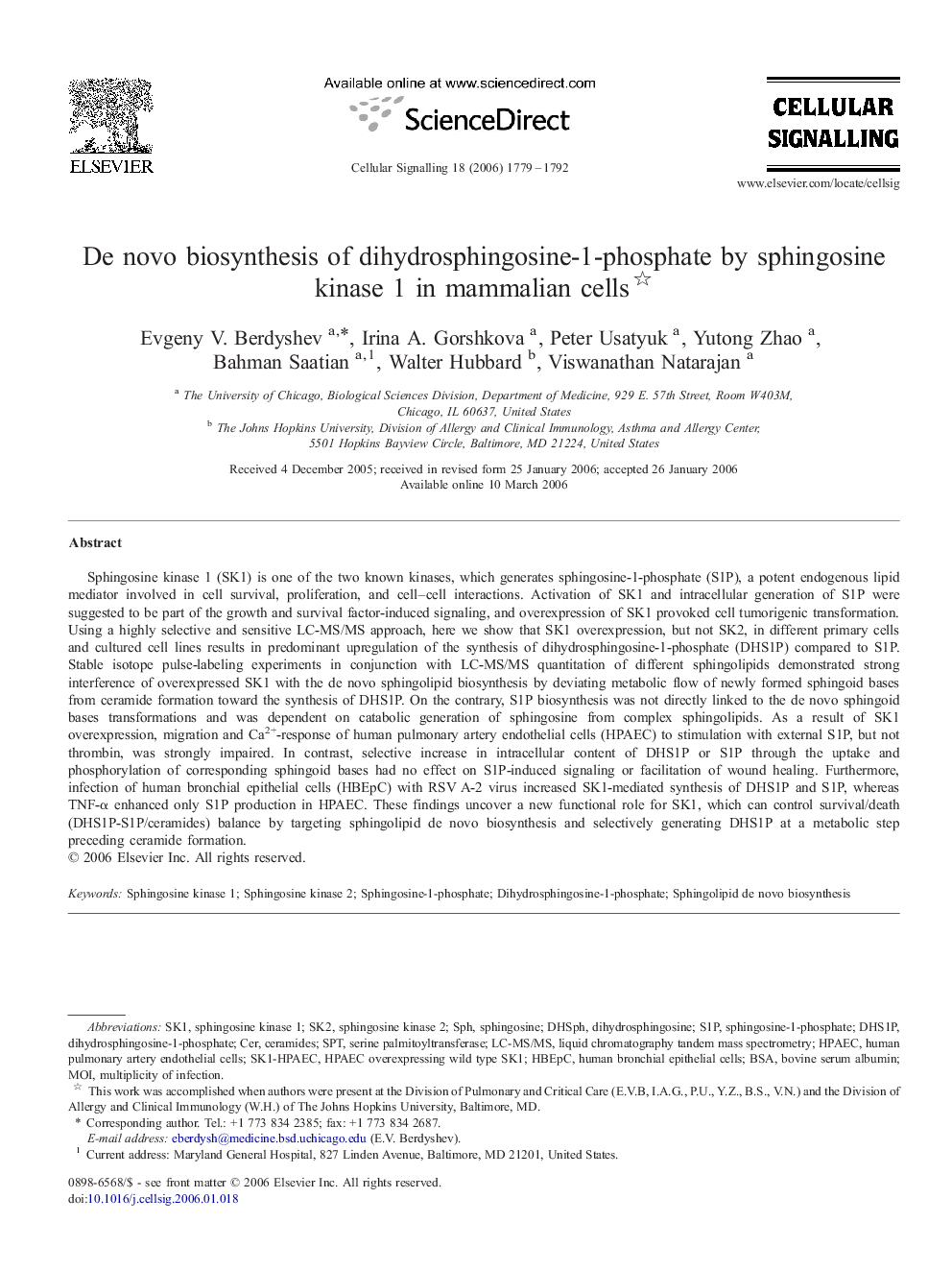| کد مقاله | کد نشریه | سال انتشار | مقاله انگلیسی | نسخه تمام متن |
|---|---|---|---|---|
| 1964456 | 1058548 | 2006 | 14 صفحه PDF | دانلود رایگان |

Sphingosine kinase 1 (SK1) is one of the two known kinases, which generates sphingosine-1-phosphate (S1P), a potent endogenous lipid mediator involved in cell survival, proliferation, and cell–cell interactions. Activation of SK1 and intracellular generation of S1P were suggested to be part of the growth and survival factor-induced signaling, and overexpression of SK1 provoked cell tumorigenic transformation. Using a highly selective and sensitive LC-MS/MS approach, here we show that SK1 overexpression, but not SK2, in different primary cells and cultured cell lines results in predominant upregulation of the synthesis of dihydrosphingosine-1-phosphate (DHS1P) compared to S1P. Stable isotope pulse-labeling experiments in conjunction with LC-MS/MS quantitation of different sphingolipids demonstrated strong interference of overexpressed SK1 with the de novo sphingolipid biosynthesis by deviating metabolic flow of newly formed sphingoid bases from ceramide formation toward the synthesis of DHS1P. On the contrary, S1P biosynthesis was not directly linked to the de novo sphingoid bases transformations and was dependent on catabolic generation of sphingosine from complex sphingolipids. As a result of SK1 overexpression, migration and Ca2+-response of human pulmonary artery endothelial cells (HPAEC) to stimulation with external S1P, but not thrombin, was strongly impaired. In contrast, selective increase in intracellular content of DHS1P or S1P through the uptake and phosphorylation of corresponding sphingoid bases had no effect on S1P-induced signaling or facilitation of wound healing. Furthermore, infection of human bronchial epithelial cells (HBEpC) with RSV A-2 virus increased SK1-mediated synthesis of DHS1P and S1P, whereas TNF-α enhanced only S1P production in HPAEC. These findings uncover a new functional role for SK1, which can control survival/death (DHS1P-S1P/ceramides) balance by targeting sphingolipid de novo biosynthesis and selectively generating DHS1P at a metabolic step preceding ceramide formation.
Journal: Cellular Signalling - Volume 18, Issue 10, October 2006, Pages 1779–1792